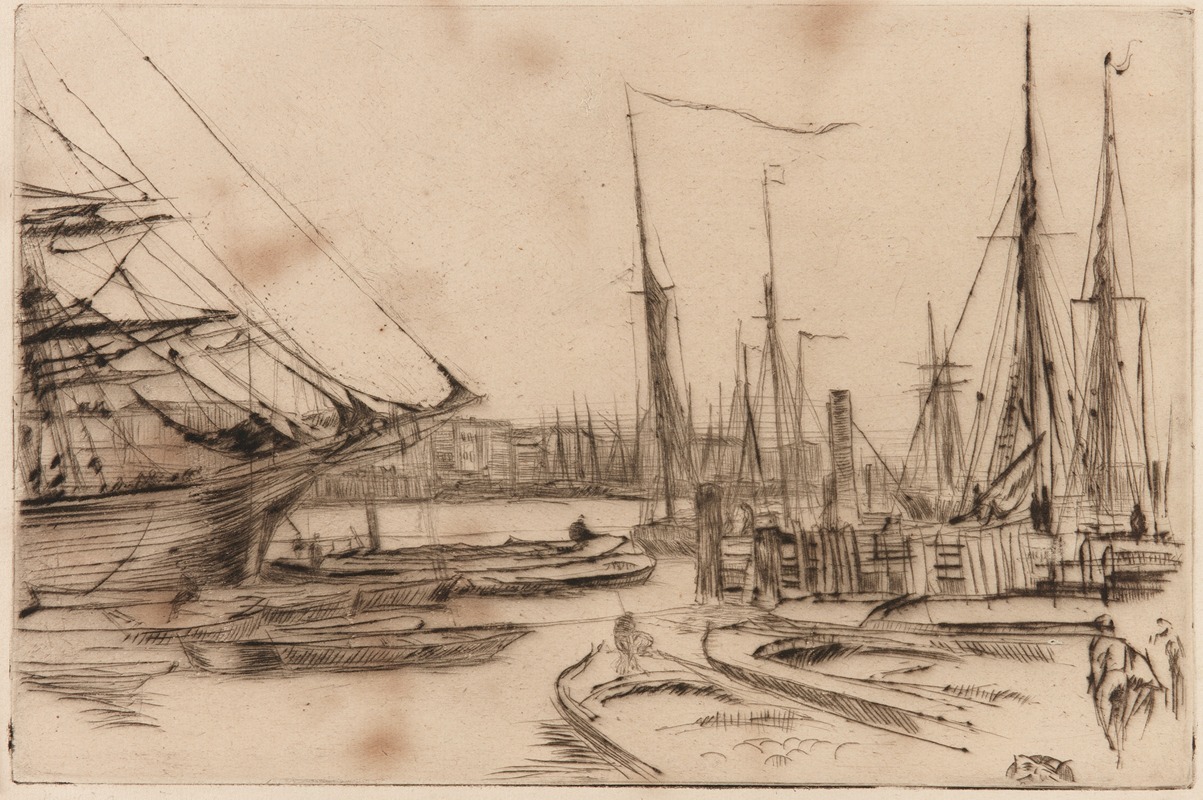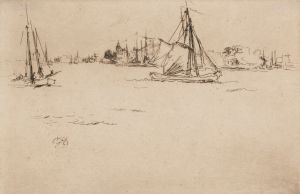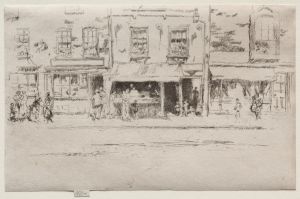
From Billingsgate
A hand-painted replica of James Abbott McNeill Whistler’s masterpiece From Billingsgate, meticulously crafted by professional artists to capture the true essence of the original. Each piece is created with museum-quality canvas and rare mineral pigments, carefully painted by experienced artists with delicate brushstrokes and rich, layered colors to perfectly recreate the texture of the original artwork. Unlike machine-printed reproductions, this hand-painted version brings the painting to life, infused with the artist’s emotions and skill in every stroke. Whether for personal collection or home decoration, it instantly elevates the artistic atmosphere of any space.
James Abbott McNeill Whistler was an American artist known for his significant contributions to the art world during the 19th century. He was a leading figure in the Aesthetic Movement, which emphasized the importance of beauty and aesthetic experience over moral or narrative content in art. Whistler's work is characterized by its innovative use of color and composition, often drawing inspiration from the natural world and urban landscapes.
"From Billingsgate" is one of Whistler's notable works, created during a period when he was deeply engaged with the cityscapes of London. Billingsgate, historically known as a fish market located by the River Thames, provided a rich source of inspiration for Whistler. The painting captures the bustling atmosphere of this iconic location, reflecting Whistler's keen interest in the interplay between light, water, and urban life.
Whistler's technique in "From Billingsgate" demonstrates his mastery of tonal harmony and subtle color variations. He often employed a limited palette to create a sense of mood and atmosphere, a hallmark of his style. This approach is evident in the way he depicted the Thames and its surroundings, using delicate brushwork to convey the movement and energy of the scene.
The painting is part of Whistler's broader exploration of London as a subject, a theme he returned to frequently throughout his career. His fascination with the city is evident in his numerous depictions of the Thames, its bridges, and the various activities along its banks. "From Billingsgate" fits within this context, offering a glimpse into the daily life of one of London's most vibrant commercial hubs.
Whistler's work was often met with mixed reviews during his lifetime, as his approach challenged traditional artistic conventions. However, his influence on the art world has been profound, and he is now recognized as a pivotal figure in the transition from 19th-century realism to modernism. His emphasis on the aesthetic qualities of art, rather than its narrative content, paved the way for future generations of artists.
"From Billingsgate" is an example of Whistler's ability to capture the essence of a place through his unique artistic vision. The painting not only reflects his technical skill but also his ability to evoke a sense of place and time. Today, Whistler's work is celebrated for its innovative approach and enduring impact on the art world.
While specific details about the painting's current location or exhibition history may not be widely documented, Whistler's legacy continues to be appreciated by art historians and enthusiasts alike. His contributions to the development of modern art remain a subject of study and admiration, with "From Billingsgate" standing as a testament to his artistic achievements.


















